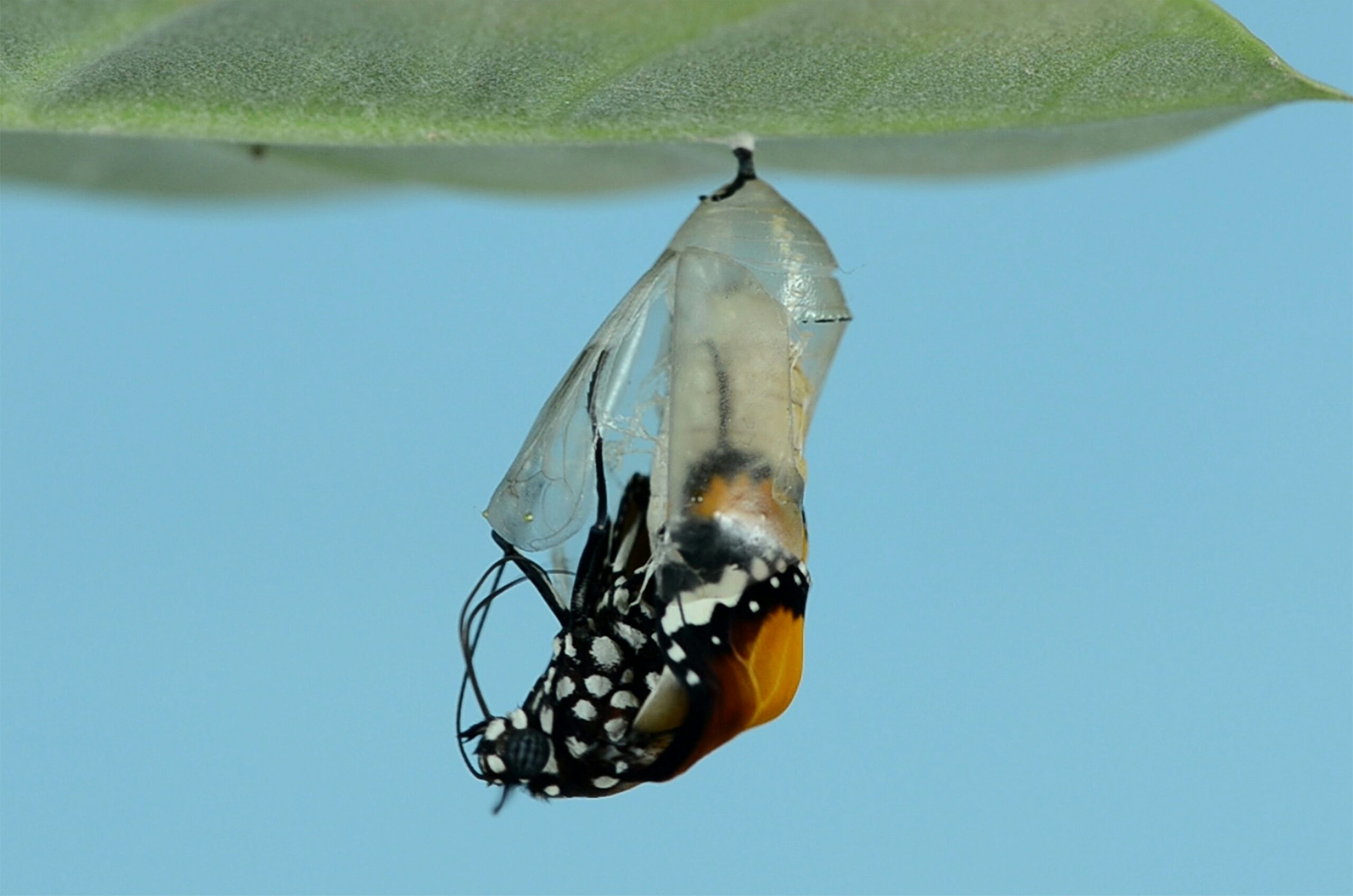Have you ever wondered how a humble caterpillar transforms into a beautiful butterfly? This magical process, known as metamorphosis, is truly a marvel of nature.
It all begins when a female butterfly lays eggs on a plant. These eggs hatch into tiny caterpillars, which have voracious appetites and spend most of their time eating leaves. As they grow, they shed their skin several times in a process called molting.
Once the caterpillar has reached its full size, it enters a stage known as pupation. It attaches itself to a leaf or a twig and forms a protective covering called a chrysalis. Inside the chrysalis, the caterpillar undergoes a remarkable transformation.
During this stage, the caterpillar’s body breaks down into a soupy substance, and its cells start to rearrange. Special groups of cells, called imaginal discs, begin to develop into the different body parts of the butterfly, such as wings, antennae, and legs.
After a few weeks or months, depending on the species, the transformation is complete. The chrysalis splits open, and a fully-formed butterfly emerges. However, the butterfly’s wings are initially small, wet, and crumpled. It must wait for them to dry and expand before it can take its first flight.
Once the butterfly is ready, it begins its short but extraordinary life as an adult. It feeds on nectar from flowers, pollinating them in the process. Butterflies play a crucial role in the ecosystem as pollinators, aiding in the reproduction of plants.
So, the next time you spot a caterpillar, take a moment to appreciate the incredible journey it will undertake to become a graceful butterfly. It’s a truly remarkable transformation that showcases the wonders of nature.

I’m MD Tanvir, and I bring years of expertise gained from working closely with pest control companies to the forefront. My journey in the industry has inspired me to launch Bug Battler, a platform aimed at equipping people with the know-how to combat pests autonomously. Through Bug Battler, I aim to empower individuals with practical insights to tackle pest infestations effectively.

